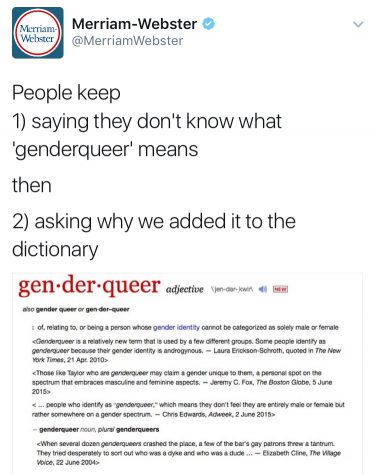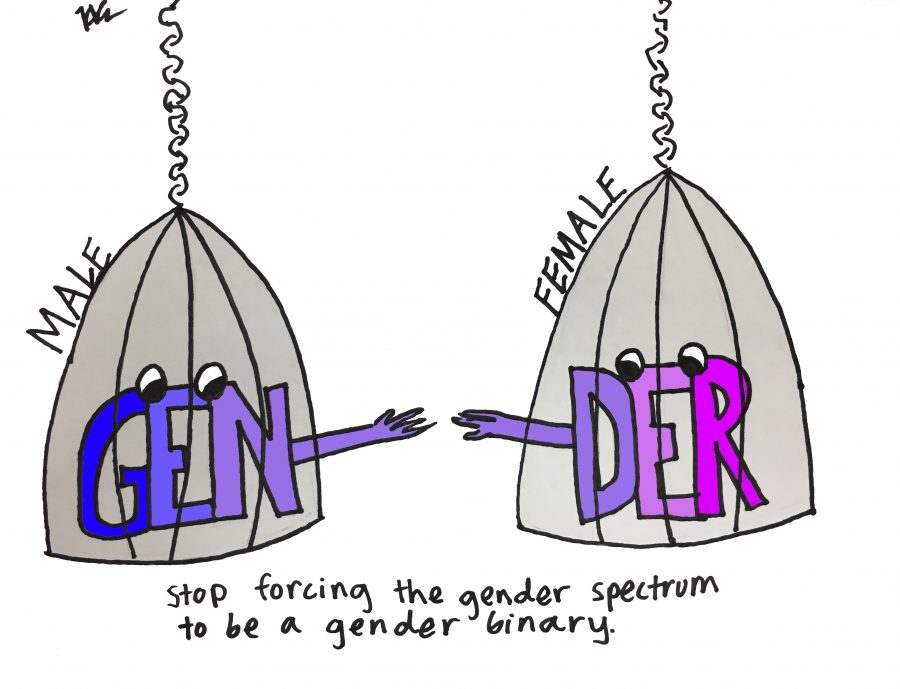Singular “they” shouldn’t be sacrilege
October 11, 2016
You find a cell phone discarded on a table in a coffee shop, and bring it up to the barista. “Someone left their phone here,” you say, acting as an upstanding citizen and placing it on the counter.
“Thank you,” the barista replies. “Someone called the store a few minutes ago, I’ll let them know you found it.”
See anything wrong with this hypothetical? Ignoring the fact that this person just turned down a free phone, the common response is no. Unless you’re an English teacher or a Grammar Nazi, you probably took no notice that the characters in this scenario utilized the singular pronoun “they” rather than the textbook grammar’s “he or she.”
But for most of us, saying “someone left his or her phone here” is nothing short of awkward. If we can use a singular “they” in conversations on a daily basis, why is it suddenly Armageddon when a gender nonconforming person asks to be referred to using this pronoun?
Even the Common Application, a college application tool used by bigwig universities including Columbia, Stanford and our pride and joy the Ohio State University, provides a space for applicants to elaborate on their gender identities beyond the sex they were assigned at birth. However Solon High School, for all its college emphasis, has yet to follow this same trend of acceptance.
Harvard University recently added a class registration feature that allows students to indicate their preferred pronouns which will then show up on the teacher’s roster. The measure aims to eliminate the awkward conversation that students would otherwise have to conduct with professors in regards to their preferred pronouns.
“We want to be able to create as many opportunities for students to feel as safe as possible in our classrooms and included as possible and for our classrooms to welcome our diverse student body that we have here,” said Van Bailey, director of Bisexual, Gay, Lesbian, Transgender, and Queer student life at Harvard College, in an interview with NPR.

Facebook offers similar options. Users can select from 58 genders for their bio as well as three official
pronouns to be shown on posts. That’s right– even Facebook sees nothing wrong with displaying the message that a user “changed their profile picture.”
SHS is noteworthy for its diversity, but by these standards, the classroom is lacking support for gender nonconforming students. Students are referred to as either “boys” or “girls” without any other options; preferred pronouns are dismissed as grammatical errors; transphobic slurs are heard up and down the halls.
That is not to say that Solon administration isn’t making an effort towards inclusivity. Faculty works to educate teachers on preferred pronouns and researches legal mandates to make sure that all non-discrimination laws are followed. Counselors even meet with students individually to form a support team during their transitions.
But for non-binary and transgender students at SHS, the progress isn’t so apparent in practice. The constant message of cisgender normativity and adherence to a gender binary (which, by the way, doesn’t exist) makes it difficult and wholly invalidating for students to be proud of their gender identities. According to a study by the Williams Institute, 50 percent of out transgender/gender nonconforming adolescents have attempted suicide.
We need to implement change. Let students indicate their preferred pronouns at the beginning of the year. Stop categorizing students as boys or girls based on appearance or name. Remind staff and students that genitals do not equate gender. Make SHS an accepting community for all students, not just cisgender ones.
